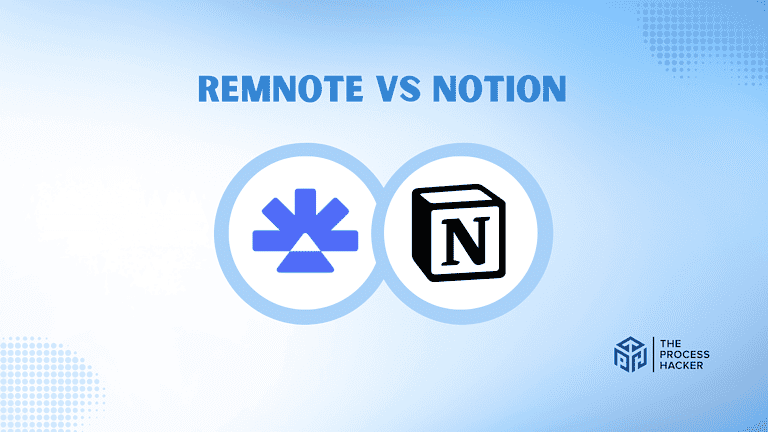Why Cybersecurity is Important for Business: Protecting Against SSRF & Other Threats
As business owners, we work tirelessly daily to build our companies and grow our customer base.
However, in today’s digital world, there is another battle waging that could threaten all of that hard work: cyber threats and attacks.
While it’s easy to push threats to cyber security to the back of our minds due to hectic business operations and limited budgets, the reality is that we are constantly under attack from malicious hackers aiming to disrupt our businesses and steal sensitive customer information and critical data.
One cyber-attack, in particular, has gained increased attention from experts due to how stealthy and damaging it can be – Server-Side Request Forgery, or SSRF for short.
An SSRF attack allows hackers to exploit vulnerabilities in your website infrastructure to access internal systems and data without authorization.
In this post, I’ll explain why cyber security is critical for your business. And, in more detail, what an SSRF attack is, how hackers use it to infiltrate networks, and steps you can take to protect your business before it’s too late.
Why is Cyber Security Important?
The importance of cybersecurity is paramount in today’s modern world. With the increasing reliance on technology and the internet, protecting our personal and sensitive information has become more crucial than ever before.
In the digital age, cyber attacks can happen at any given moment, and the consequences can be devastating. Whether it’s identity theft, financial fraud, or even full-blown cyber warfare, the potential threats to our security are numerous.
Investing in effective cyber security efforts can help safeguard against these threats and gain peace of mind knowing that our online presence is protected.
Ultimately, prioritizing your cybersecurity strategy is essential for both individual and collective safety in today’s interconnected world.
What is SSRF?
Server-side request Forgery (SSRF) is a sophisticated cyber threat that exploits vulnerabilities in a web application’s code to trick the server into making unintended and potentially harmful requests.
It’s akin to a digital impersonator manipulating your server into carrying out unauthorized actions on its behalf.
SSRF can lead to unauthorized access, data breaches, and even compromise the entire server infrastructure if left unaddressed. A multi-faceted cyber security approach is imperative to fortify your business against SSRF and similar threats.
Importance of Cyber Security for Business Growth
In the interconnected and digitized landscape of modern business, the ramifications of a cyber security breach extend far beyond immediate financial losses. A security incident can tarnish a company’s reputation, erode customer trust, and result in legal consequences.
As businesses increasingly rely on digital platforms for data storage, communication, and transaction processing, investing in robust cyber security becomes a strategic decision and a business imperative.
Safeguarding against cyber threats is integral to sustaining growth and ensuring the long-term viability of an enterprise.
The SSRF Challenge and Friendly Solutions
Given the complex nature of SSRF and its potential consequences, adopting user-friendly solutions is crucial for comprehensive protection. Let’s explore in-depth strategies to fortify your Cyber Security defenses against SSRF and related threats:
Educate Your Team
Start by creating a cybersecurity-aware culture within your organization. Conduct regular training sessions to educate employees on recognizing and avoiding phishing attempts, identifying suspicious links, and practicing safe online behavior.
This includes teaching them about the risks of SSRF attacks and how to report any suspicious activity.
Further, develop employee awareness programs to update your team on the latest Cyber Security threats and best practices. Encourage a culture of reporting suspicious activities promptly, fostering a collective effort to maintain a secure digital environment.
Regular Software Updates
Cybercriminals exploit vulnerabilities in outdated software. Ensure your organization has a robust patch management system to regularly update all software and applications. Timely updates not only address known vulnerabilities but also enhance overall system security.
Additionally, consider implementing an automated system that alerts users to update their software and provides clear instructions on how to do so.
Create Strong Passwords
Encourage your team to use strong passwords for all accounts, including work and personal. These should be at least 12 characters long with a mix of uppercase and lowercase letters, numbers, and special symbols.
Avoid using easily guessable information such as birthdates or common words. Consider implementing a password manager tool to help generate and securely store complex passwords.
Encourage your team to regularly update their passwords, at least every 90 days. This helps prevent any potential hackers from accessing old or forgotten login information. Additionally, consider implementing a policy that requires a password change after a certain number of unsuccessful login attempts.
Require Multi-Factor Authentication
Require employees to enable multi-factor authentication (MFA) for all accounts whenever possible. This adds an extra layer of security by requiring a second form of identification, such as a code sent to the user’s phone, in addition to their password.
MFA significantly reduces the risk of unauthorized access, even if a password is compromised.
Implement Robust Access Controls
Restricting access to sensitive areas of your network is fundamental to cyber security. Implementing stringent access controls promotes network security, ensuring only authorized personnel access critical systems and sensitive data.
This mitigates the risk of unauthorized access and potential SSRF exploits.
Implement Firewall Protection
Firewalls act as a crucial barrier between your internal network and external threats. Deploy advanced firewalls to monitor and control incoming and outgoing network traffic.
Specifically, configured firewalls can thwart SSRF attempts, providing an additional layer of defense. Firewalls can also detect and block malicious requests, preventing them from reaching vulnerable systems.
Adapt Secure Coding Practices
Highlight secure coding practices during the development life cycle. Train your developers to follow best practices prioritizing security, reducing the likelihood of introducing vulnerabilities.
Secure coding practices are instrumental in preventing SSRF and other coding-related exploits. Emphasize the importance of input validation and never trusting user-supplied data.
Advanced Threat Detection and Response
Invest in advanced threat detection and response mechanisms. Utilize intrusion detection systems (IDS) and security information and event management (SIEM) tools to proactively identify and respond to potential threats, including SSRF attacks.
How to Protect Against Cyber Threats
As businesses continue to evolve in the digital landscape, the need for proactive security measures becomes increasingly paramount. In addition to the fundamental strategies outlined earlier,
Here are additional steps to further strengthen your Cyber Security posture:
Data Encryption
Implement robust encryption protocols to safeguard sensitive data in transit and at rest. Encryption ensures that the data remains unintelligible in your computer systems even if unauthorized access occurs, adding an extra layer of protection against potential SSRF exploits of data breach.
This is especially crucial for organizations that handle sensitive information on cloud services, such as financial or medical data.
Incident Response Plan
Develop a comprehensive incident response plan to swiftly and effectively address cyber security incidents. This plan should outline the steps to be taken during a security breach, including SSRF incidents, ensuring a coordinated and efficient response to minimize damage.
The plan should also include regular testing and updating to ensure its effectiveness.
Regular Audits for Cyber Security Threats
Conduct routine security audits and vulnerability assessments to pinpoint and manage potential frailties in your systems. These audits provide insights into the effectiveness of your cyber security measures and help proactively mitigate security risks.
Regular audits using third-party risk management also help identify areas for improvement and enhance your overall security posture.
FAQs on Cyber Security
Why is Cyber Security crucial for business growth?
Cyber Security is vital as it protects digital assets, preserves customer trust, and ensures regulatory compliance. A breach can have severe consequences, impacting reputation, finances, and legal standing.
How can businesses safeguard against SSRF?
Implementing user-friendly solutions, such as employee training, regular updates, access controls, and firewall protection, strengthens defenses against SSRF and other threats.
What role do secure coding practices play in Cyber Security?
Secure coding practices are essential for preventing vulnerabilities that attackers could exploit. They ensure that software is developed with security, reducing the risk of SSRF and other coding-related exploits.
How often should businesses conduct security audits?
Regular security audits, preferably conducted periodically, help identify and address potential weaknesses in systems. These audits contribute to proactive risk mitigation and the continuous improvement of cyber security measures.
Final Thoughts on Cyber Security & SSRF
In conclusion, cyber security may seem daunting and complex, but it is one that businesses cannot afford to ignore.
With the rise of threats like SSRF and other cyber attacks, companies must take proactive measures to protect their assets and safeguard sensitive data.
As we’ve discussed, implementing a robust cyber security strategy is crucial in today’s digital landscape. It not only shields against potential financial losses from data breaches but also helps build trust with customers and partners.
So, let’s ditch the outdated notion of “it won’t happen to us” and instead prioritize the safety of our business infrastructure. There is no one-size-fits-all solution for cybersecurity – it requires constant vigilance and adaptation.
Don’t wait until it’s too late – take a proactive approach now by implementing effective security protocols and regularly training employees on best practices. Your business’s future could depend on it.
Let’s keep our data safe, our clients happy, and ourselves out of headlines for all the wrong reasons – implement a cyber security strategy today!







